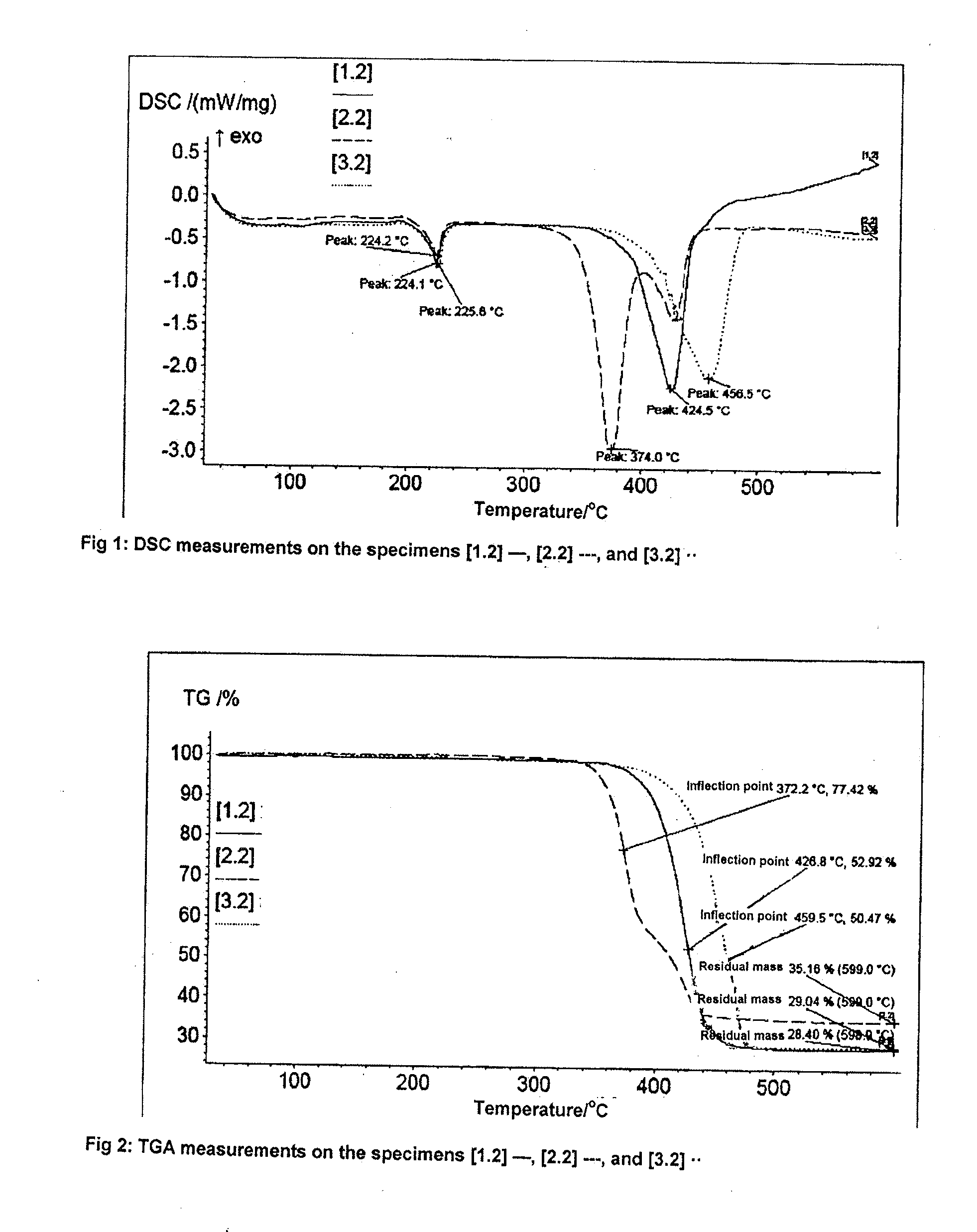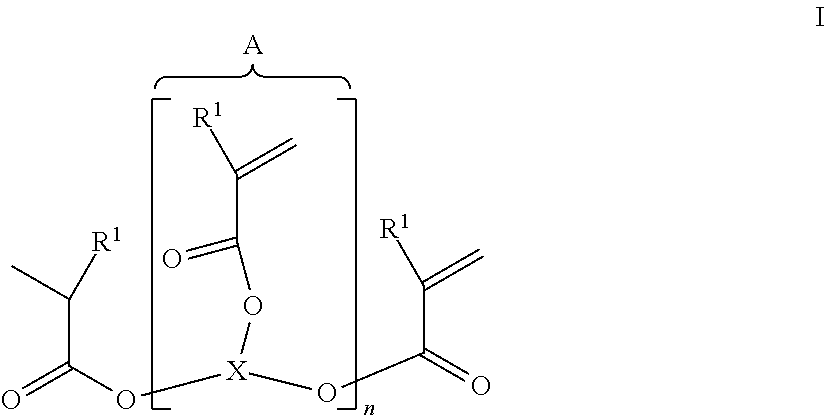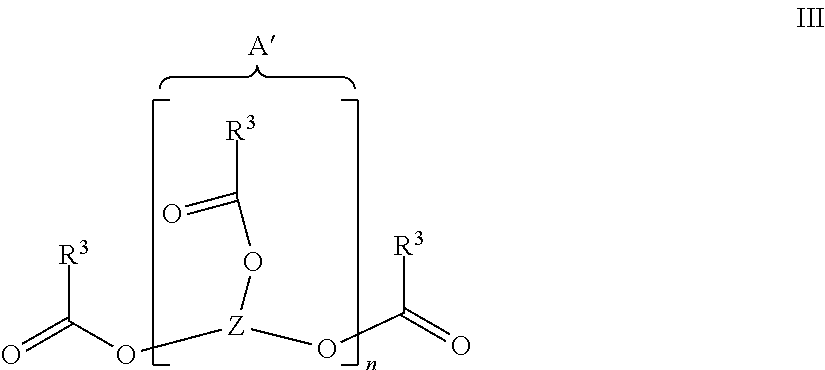Duromer, production method, use and compositions
- Summary
- Abstract
- Description
- Claims
- Application Information
AI Technical Summary
Benefits of technology
Problems solved by technology
Method used
Image
Examples
example 1
Thermoset of pentaerythritol tetra-acrylate (PETA) and 6H-dibenz[c,e][1,2]-oxaphosphorin-6-oxide (DOPO)
Method A: Emulsion Polymerization in Toluene
[0078]17.62 g (0.05 mol) of pentaerythritol tetra-acrylate and 21.62 g (0.1 mol) of DOPO were put in 150 ml of toluene, mixed with 10.12 g (0.1 mol, 13.9 ml) of triethylamine and heated for 4 hours without protective gas at 80° C. until complete implementation of the Michael addition (a check on the disappearance of the educts was effected by 31P and 1H-NMR analysis). The mixture was heated under a protective gas (feed of 100% N2), with reflux and very intensive agitation for 30 hours at 125° C. The product was sucked away, finely ground after drying in air and completely dried for 6 hours at 225° C. in a vacuum (6 mbars). A white solid was obtained with a yield of 31.65 g (81%) and the following properties:
[0079]glass transition temperature (DSC): 98.0° C.;
[0080]elementary analysis: calculated n*C41H38O12P2: C, 62.76%; H, 4.88%; P, 7.89%...
example 2
Thermoset of Pentaerythritol Tetra-Acrylate and Diphenyl Phosphinoxide (DPhPO)
Emulsion Polymerization in Toluene
[0084]17.6 g (0.05 mol) of pentaerythritol tetra-acrylate and 20.2 g (0.1 mol) of DPhPO were put in 150 ml of toluene, mixed with 10.1 g (0.1 mol, 13.9 ml) of triethylamine and heated for 4 hours without protective gas at 80° C. until complete implementation of the Michael addition (a check was effected by NMR analysis). The mixture was heated under a protective gas (feed of 100% N2), with reflux and very intensive agitation for 30 hours at 125° C. The product was sucked away, finely ground after drying in air and completely dried for 6 hours at 210° C. in a vacuum (6 mbars). A white solid was obtained with a yield of 85%.
example 3
Thermoset of tris(2-acryloxyethyl)isocyanurate (THEICTA) and 6H-dibenz[c,e][1,2]-oxophosphorin-6-oxide (DOPO)
Emulsion Polymerization in Toluene
[0085]42.3 g (0.1 mol) of THEICTA and 21.62 g (0.1 mol) of DOPO were put in 150 ml of toluene, mixed with 10.1 g (0.1 mol, 13.9 ml) of triethylamine and heated for 4 hours without protective gas at 80° C. until complete implementation of the Michael addition (a check on the disappearance of the educts was effected by 31P and 1H-NMR analysis). The mixture was heated under a protective gas, with reflux and vigorous agitation for 30 hours at 125° C. The product was sucked away, finely ground after drying in air and completely dried for 6 hours at 200° C. in a vacuum (6 mbars). A white solid was obtained with a yield 87%.
PUM
| Property | Measurement | Unit |
|---|---|---|
| Percent by mass | aaaaa | aaaaa |
| Percent by mass | aaaaa | aaaaa |
| Percent by mass | aaaaa | aaaaa |
Abstract
Description
Claims
Application Information
 Login to View More
Login to View More - R&D
- Intellectual Property
- Life Sciences
- Materials
- Tech Scout
- Unparalleled Data Quality
- Higher Quality Content
- 60% Fewer Hallucinations
Browse by: Latest US Patents, China's latest patents, Technical Efficacy Thesaurus, Application Domain, Technology Topic, Popular Technical Reports.
© 2025 PatSnap. All rights reserved.Legal|Privacy policy|Modern Slavery Act Transparency Statement|Sitemap|About US| Contact US: help@patsnap.com



